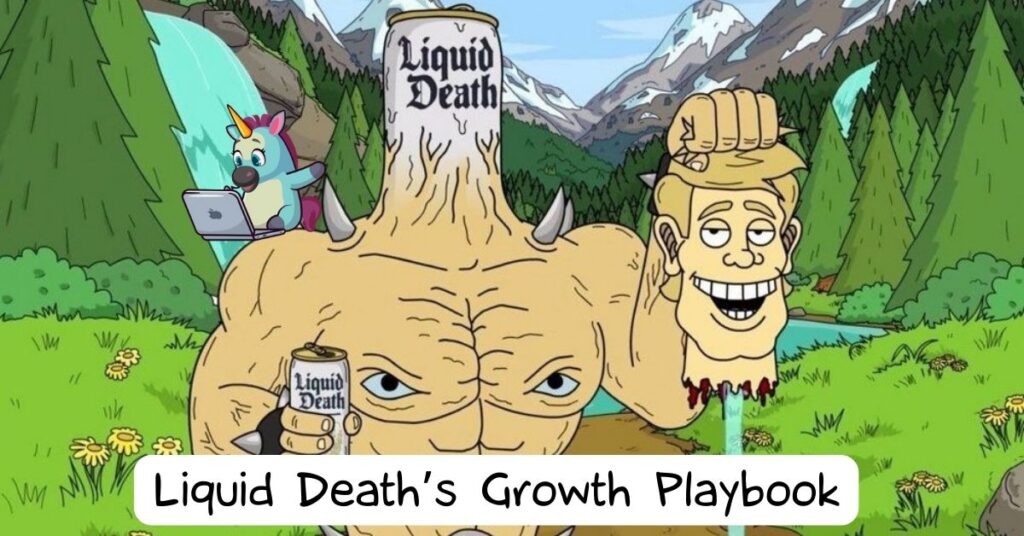
Hi there, unicorns! 👋
Today, we’re diving into Liquid Death’s growth playbook – and it’s not your typical tech startup story.
While we usually explore software giants and apps, this time we’re cracking open a can of disruption in the water aisle.
We decided to do that cause after researching their growth and marketing tactics, we thought there was a lot to learn from them.
From a wild idea to a $1.4B valuation, Liquid Death has become one of the most disruptive beverage brands on the planet.
We’ll reveal their unorthodox strategies, explore their industry impact, and examine the challenges they faced – from skeptical investors to battling giants.
Grab your tallboys, and let’s murder our thirst for knowledge! 💀🥤
The Idea💡
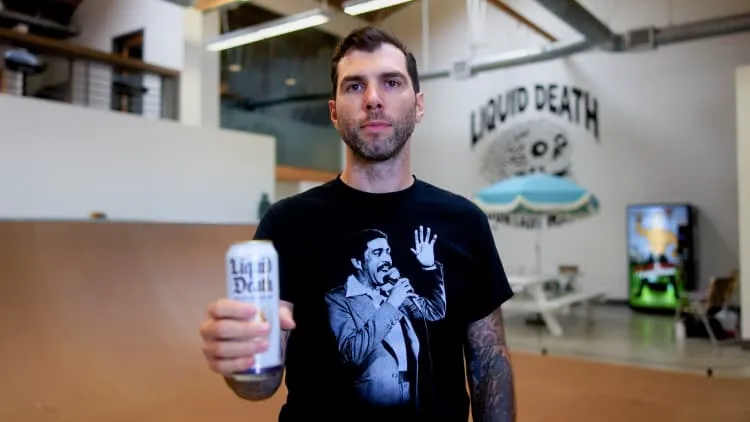
It was 2015 when former Netflix creative director Mike Cessario stumbled upon a game-changing concept.
While at the Warped Tour music festival, Cessario noticed bands drinking water from energy drink cans to attract sponsorships and maintain their image.
This sparked an idea: what if water could be as cool as beer or energy drinks?
Cessario’s background in punk rock and advertising led him to envision a brand that would make water exciting.
His core concept was simple:
Create a water brand with the attitude of a craft beer and the health benefits of water, all while tackling the plastic pollution problem.
Thus, Liquid Death was born – with a mission to “murder your thirst” and plastic bottles.
The Problem 😫
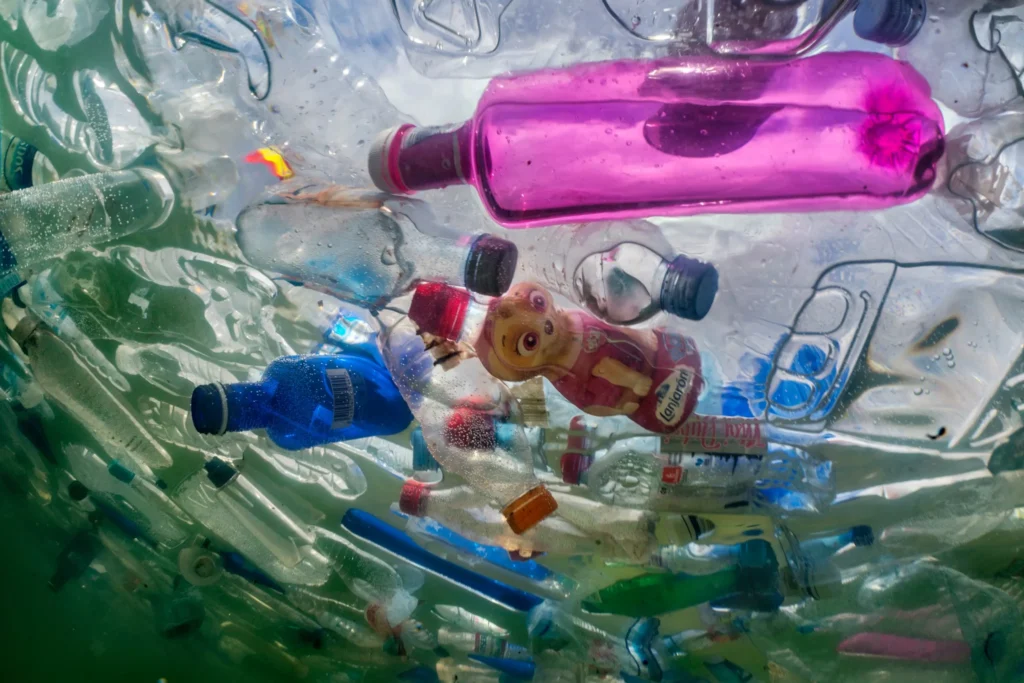
Before Liquid Death, the bottled water industry had a massive elephant in the room: plastic pollution.
Billions of single-use plastic bottles were (and still are) choking our oceans, littering our landscapes, and piling up in landfills.
Despite growing environmental awareness, the industry seemed stuck in its ways.
Consumers wanted to stay hydrated, but many felt guilty about contributing to the plastic problem.
Reusable bottles were an option, but not always convenient.
The industry was crying out for a solution that could make water portable and eco-friendly, without sacrificing the convenience people had grown accustomed to.
Enter Liquid Death, ready to “murder” not just your thirst, but plastic pollution too.
The MVP 🛠️
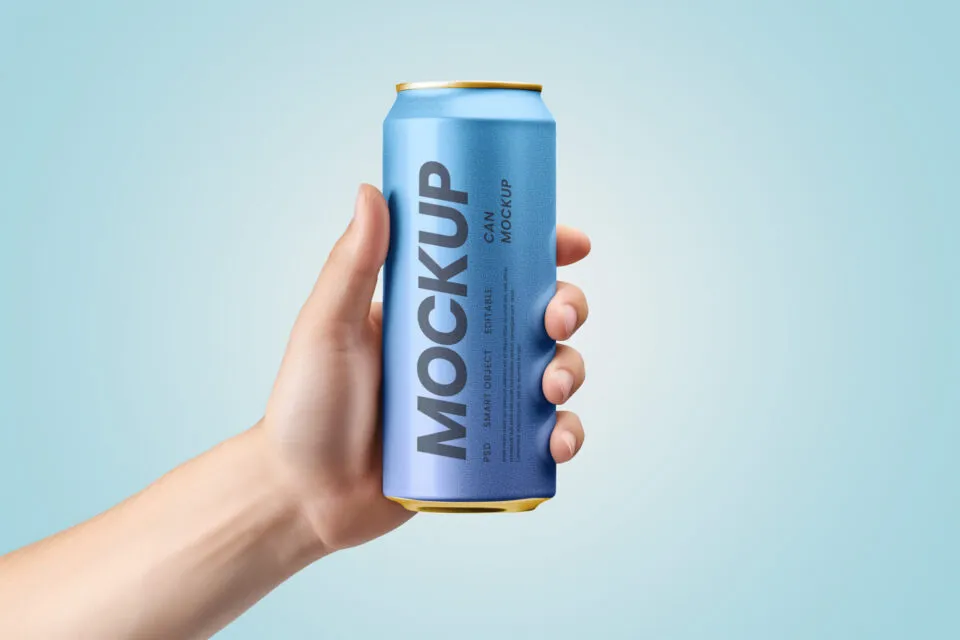
Liquid Death’s MVP wasn’t a product – it was a Facebook page.
Pure genius.
In 2017, Cessario launched a Facebook page for the non-existent brand, featuring mock-up cans and irreverent content.
This move allowed them to:
- Test market reaction without production costs
- Build an audience before having a product
- Gather data on potential customers
- Prove concept viability to investors
Within months, the page had 40,000 followers and caught the eye of angel investors.
This social-first approach was perfect for a DTC brand, especially in the water industry where traditional MVPs are challenging due to production and distribution costs.
Product-Market Fit 🎯
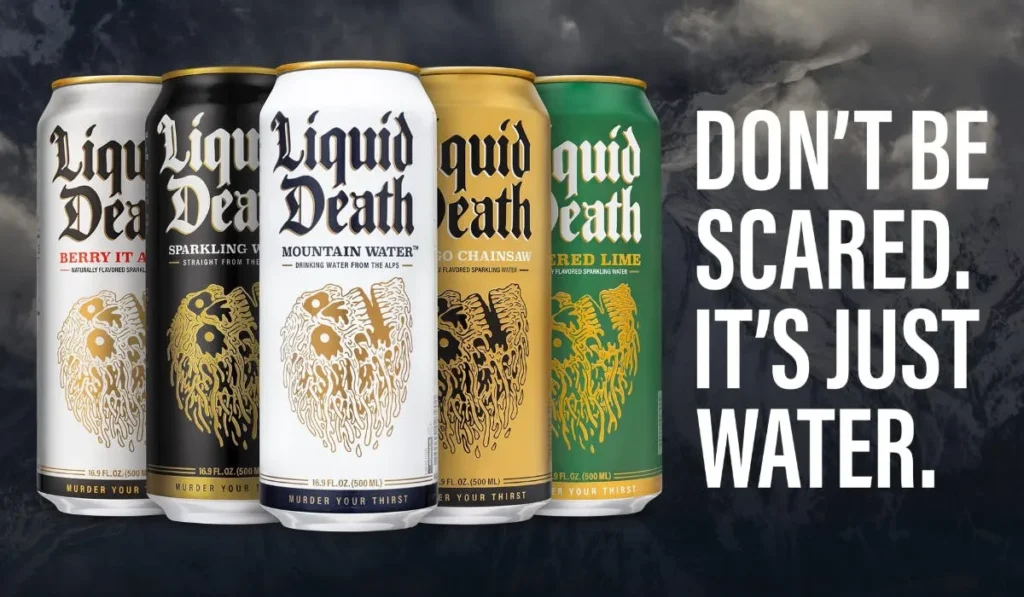
Liquid Death’s journey to product-market fit was unconventional and brilliant.
It all started with a $2,500 investment in a Facebook page and video.
This minimal spend yielded impressive results:
- – The Facebook page quickly grew to 60,000 followers
- – People were engaging with the content, from loving it to questioning if it was real
- – Inquiries came in from 7-Eleven franchisees and distributors
This social media success proved there was real interest in Liquid Death’s irreverent take on water.
With solid evidence of demand, they were able to secure their first round of funding to turn the concept into reality.
Liquid Death had found its market before selling a single can, proving the power of their brand concept.
Positioning & Branding 🎨📐
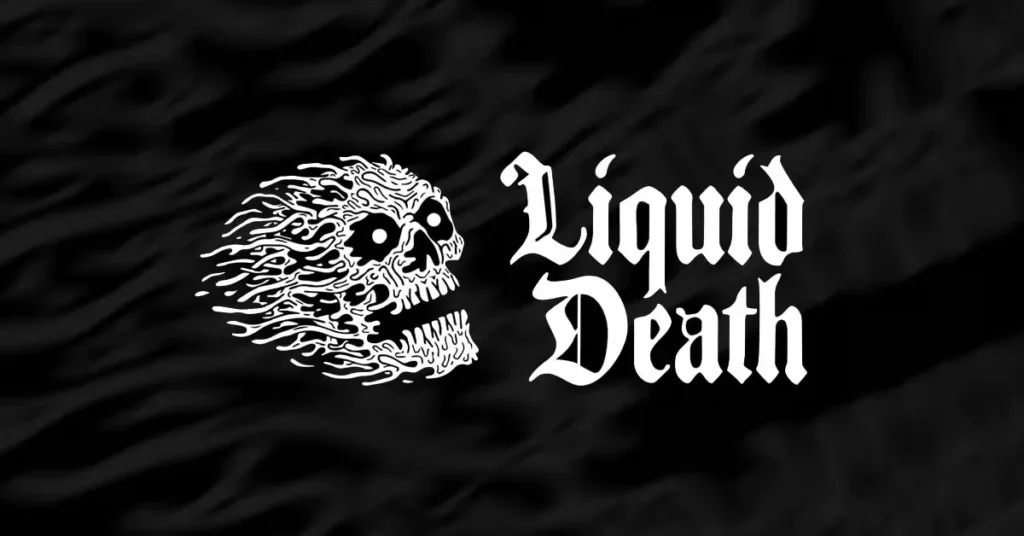
Liquid Death positioned itself as the ultimate rebellion against boring bottled water – “Murder Your Thirst” became their battle cry.
Their branding strategy focused on:
- Irreverence: Embracing a punk rock, heavy metal aesthetic that’s the antithesis of typical water brands
- Sustainability: “Death to Plastic” campaign highlighting their eco-friendly aluminum cans
- Entertainment: Treating marketing as entertainment, not just advertising
- Health: Subtly emphasizing the health benefits of choosing water over sugary drinks
Liquid Death’s logo, a skull with crossed bones (made of lightning bolts), perfectly embodies their edgy ethos.
Their tallboy cans look more like beer than water, challenging perceptions and standing out on shelves.
Their marketing often pokes fun at both the beverage industry and themselves.
Campaigns like “Don’t Be a Punk, Drink Punk” and collaborations with heavy metal bands reinforced their rebellious image.
Liquid Death also positioned itself as a lifestyle brand, not just a beverage.
They created a “Country Club” for fans, complete with merchandise that people actually want to wear – something unheard of for a water brand.
This branding helped Liquid Death stand out, appealing to a younger, more environmentally conscious audience while gaining credibility within the punk and metal scenes.
It turned water – the most basic of beverages – into a statement product that people are proud to be seen with.
Pricing 💰📊
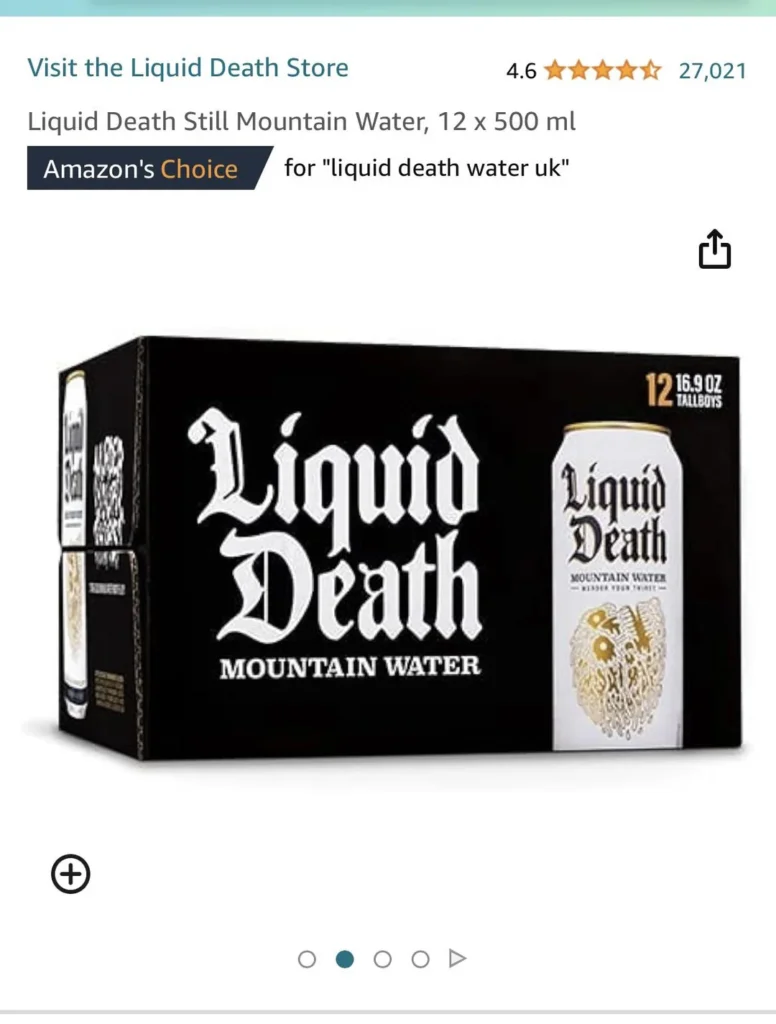
Unlike tech startups, Liquid Death’s pricing strategy isn’t a complex tale of freemium models or tiered subscriptions. It’s pretty straightforward:
They price their water like a premium beer, not a commodity.
A 16.9 oz can typically retails for $1.99, while a 12-pack goes for about $21.99.
That’s wayyy pricier than your average bottled water.
But here’s the kicker: people are happily paying it.
Why?
Because Liquid Death isn’t selling water; they’re selling an experience, a lifestyle, and a conversation starter.
Their pricing reflects their positioning as a premium, eco-friendly alternative to both bottled water and alcoholic beverages.
It’s a simple strategy, but it’s working wonders for their bottom line.
Acquisition 🚀
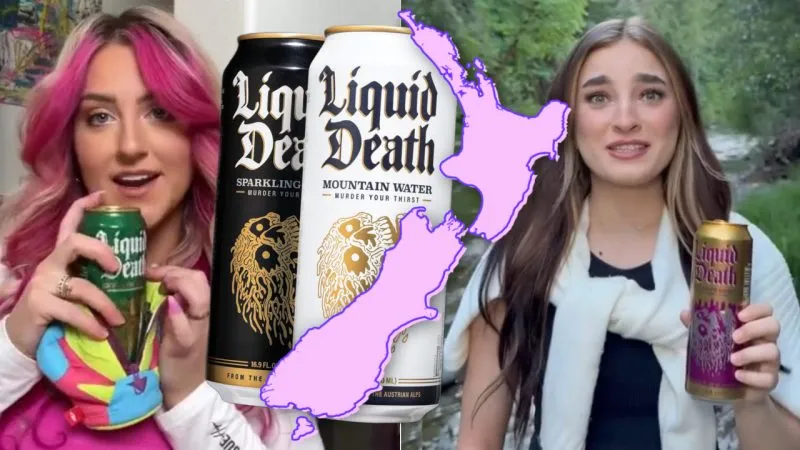
Liquid Death’s acquisition strategy is all about viral marketing and unconventional tactics.
Unlike tech startups that often rely on complex growth strategies, Liquid Death’s approach is all about creating buzz and leveraging their outrageous brand identity.
- Social Media Domination: Liquid Death’s social media presence is legendary. They create outrageous, shareable content that often goes viral. Their TikTok account, for instance, has over 3 million followers and features everything from punk rock concerts to absurdist skits. They don’t just post; they entertain.
- Influencer Partnerships: The brand collaborates with an eclectic mix of influencers that align with their image. From Tony Hawk in skateboarding to metal bands like Gwar, these partnerships extend their reach into niche communities that resonate with their brand.
- Guerrilla Marketing: Liquid Death isn’t afraid to go big and weird. They once created a “Liquid Death Spa” at a music festival where people could bathe in their water. These outlandish stunts generate massive buzz and media coverage.
- Content Marketing: Their approach to content is unique. They produced “Greatest Hates,” an actual album of hate comments they received set to death metal music. This kind of content doesn’t just advertise; it becomes part of pop culture.
- Strategic Retail Partnerships: By partnering with retailers like Whole Foods and 7-Eleven, Liquid Death increased its visibility and accessibility. They’re not just in health food stores or punk rock venues; they’re everywhere their target audience shops.
- Event Sponsorships: Liquid Death sponsors events that align with their brand image, like punk rock shows and extreme sports competitions. This puts their product directly in the hands of their core demographic in an authentic setting.
- Merchandise: Their merch line is extensive and popular. From t-shirts to skateboards, Liquid Death’s merchandise turns customers into brand ambassadors. It’s not just about hydration; it’s about identity.
- Cause Marketing: The “Death to Plastic” campaign resonates with environmentally conscious consumers. They donate a portion of profits to plastic cleanup efforts, aligning their brand with a cause their audience cares about.
- Controversy Marketing: Liquid Death doesn’t shy away from controversy; they embrace it. When people complained about their edgy marketing, they turned those complaints into content, effectively neutralizing criticism.
This multi-faceted approach has fueled Liquid Death’s explosive growth, making them one of the fastest-growing non-alcoholic beverage brands in the US.
Growth Loops 🔄🚀
Liquid Death’s growth loop is refreshingly simple compared to complex tech startups. It’s a classic case of visibility leading to curiosity, then purchase, and finally, organic marketing.
Here’s how it works:
- People buy Liquid Death
- They’re seen with the eye-catching tallboy cans or see their online posts with them
- Others get curious about the edgy branding
- They try it, often sharing on social media
- More people see it, get curious, and the cycle continues
This loop is amplified by Liquid Death’s viral marketing and merchandise.
Fans wearing Liquid Death gear become walking billboards, sparking conversations and interest.
Unlike tech companies with intricate user acquisition funnels, Liquid Death’s growth is driven by good old-fashioned word-of-mouth, supercharged by their unforgettable branding.
Iconic Campaigns 🎭🚀
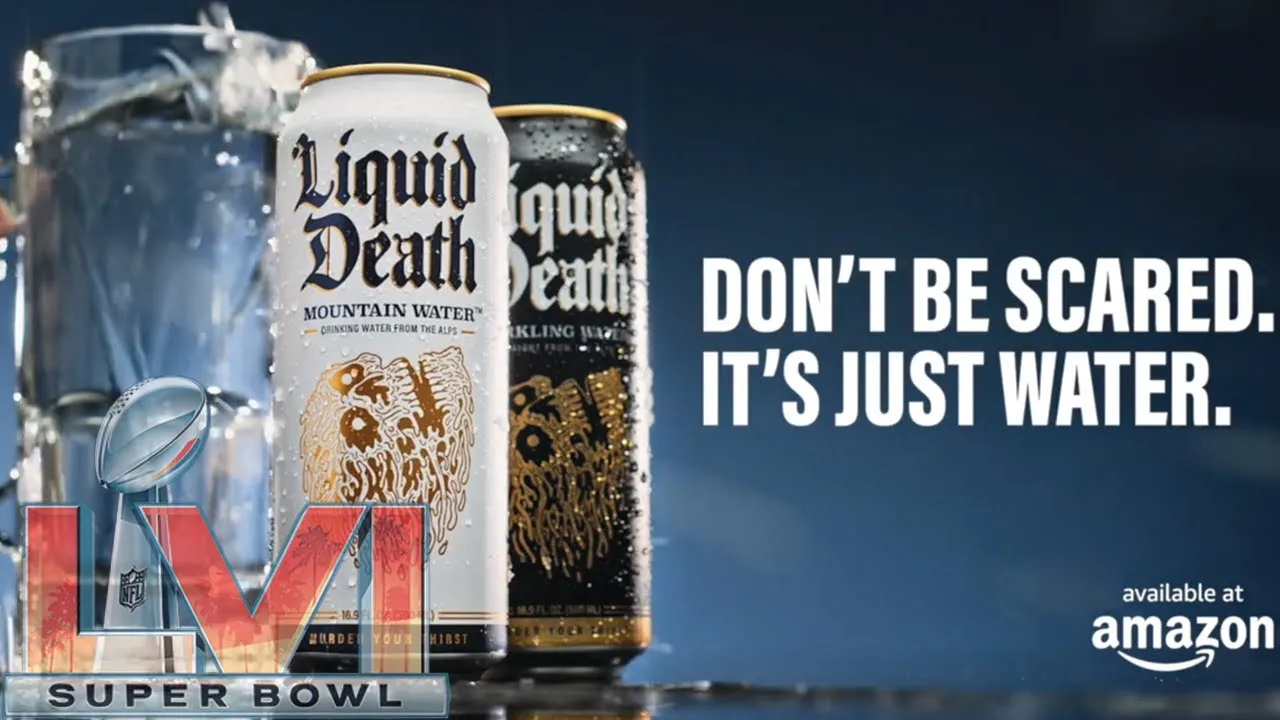
Because Liquid Death isn’t your typical tech startup, we won’t be diving into complex activation funnels, retention strategies, or referral programs.
Instead, let’s explore what really sets them apart: their outrageously creative marketing campaigns.
These campaigns aren’t just ads; they’re entertainment that people actually want to watch and share.
1. Deadliest Stuff on Earth
This campaign introduced Liquid Death to the world with a bang. It pairs inspirational orchestration with shocking statistics and profanity, narrated by a “professional actor.” The ad keeps viewers on their toes with quick cuts between actors, action shots, and stock footage. It brilliantly juxtaposes the deadly-sounding brand name with the facts about water, concluding that Liquid Death is “a brand made from the deadliest stuff on Earth.”
2. Big Game (Super Bowl Ad)
Liquid Death’s 2022 Super Bowl commercial is a masterclass in shock and redirection. It opens with children passing around tallboy cans while a rock song blares “breaking the law.” The tension builds as a pregnant woman joins in, only to be relieved by the reveal: “don’t be scared, it’s just water.” This ad brilliantly plays on the brand’s edgy image while showcasing its actually wholesome product.
3. Blind Taze Test
In response to haters, Liquid Death created perhaps one of the most shocking taste tests ever. They flew in people that have commented that Liquid Death is the worst-tasting water and hooked them up to Tasers. Participants had to identify Liquid Death as the worst-tasting water among unlabeled water brands. If they were right, they would get $1000, and if they were wring they would get zapped. This campaign turned potential PR nightmares into viral content, showcasing the brand’s ability to lean into controversy and come out on top.
4. Greatest Hates
Liquid Death took hate comments and turned them into a death metal album. It’s a perfect example of their ability to turn negativity into entertaining, shareable content.
5. Mascot Madness
Liquid Death’s social media mascot is a far cry from cute brand characters. Their disturbing, chiseled creature with eyes on its chest and a can for a neck embodies the brand’s commitment to the outrageous. This mascot skateboards terrifies passersby and works out on TikTok and Instagram, ensuring Liquid Death’s social presence is as unforgettable as its product.
These campaigns showcase Liquid Death’s marketing genius. They don’t just sell water; they sell an experience, a conversation starter, and a lifestyle. By prioritizing entertainment over traditional advertising, Liquid Death has created a brand that people actually want to engage with and share. It’s not about conversion rates or click-throughs; it’s about creating content so compelling that marketing becomes unnecessary. The product sells itself because people can’t stop talking about it.
Challenges 😰
Despite their meteoric rise, Liquid Death hasn’t had a smooth sail to the top. They’ve faced several hurdles:
- Skeptical Investors: Initially, many thought the idea was too outlandish. Who’d buy “death” water?
- Production Challenges: Finding a facility to can water in tallboys wasn’t easy, forcing them to start production in Austria.
- Distribution Hurdles: Breaking into traditional retail channels with such an unconventional product proved difficult at first.
- Backlash from Conservative Markets: Their edgy branding didn’t sit well with everyone, particularly in more conservative regions.
- Sustainability Claims Scrutiny: As they grew, their eco-friendly messaging came under increased scrutiny.
- Maintaining Brand Identity at Scale: Keeping their rebellious spirit while expanding into mainstream markets has been a balancing act.
- Competition Catching Up: As they’ve grown, competitors have started to mimic their irreverent approach.
Despite these challenges, Liquid Death’s commitment to their unique brand identity and marketing approach has helped them not just survive, but thrive in the cutthroat beverage industry.
Lessons Learned 🎓
Liquid Death’s journey offers valuable insights for entrepreneurs and marketers alike:
Lesson 1: Embrace the Unconventional
Liquid Death proved that even the most basic product can be revolutionized with creative branding. They turned water, the most commoditized beverage, into a viral sensation.
The takeaway? Don’t be afraid to challenge industry norms. Sometimes, the “craziest” idea can be your biggest differentiator.
Lesson 2: Content is King, Entertainment is Emperor
By focusing on creating entertaining content rather than traditional ads, Liquid Death built a loyal following. Their campaigns are shared because they’re funny, not because they’re selling.
The takeaway? Create content people want to see, not just ads you want them to see. Entertainment value can trump traditional marketing metrics.
Lesson 3: Turn Negatives into Positives
From hate comments to criticism, Liquid Death consistently transformed potential PR disasters into marketing gold. Their “Greatest Hates” album is a prime example.
The takeaway? Always look for the opportunity in adversity. With the right approach, criticism can become your best marketing material.
Lesson 4: Know Your Audience
Liquid Death didn’t try to appeal to everyone. They focused on a specific demographic and went all-in on messaging that resonated with them.
The takeaway? It’s better to be loved by a few than liked by many. Identify your core audience and cater to them unapologetically.
Lesson 5: Sustainability Can Be Cool
They showed that eco-friendly doesn’t have to mean boring, merging environmental consciousness with edgy branding.
The takeaway? Find innovative ways to incorporate important values into your brand. You can be responsible and rebellious at the same time.
And there you have it, unicorns! 🦄
You’re absolutely right, and I apologize for that oversight. Let me provide a fresh, unique outro that captures the essence of Liquid Death without borrowing phrases from previous playbooks:
Liquid Death’s rise from a madcap idea to a $1.4 billion phenomenon is a testament to the power of audacious branding.
They didn’t just disrupt the water market; they dropkicked it into a mosh pit of creativity.
Their playbook, filled with shock-value stunts and content that entertains first and sells second, offers a refreshing gulp of inspiration for any industry.
Whether you’re crafting code or crafting beverages, remember: sometimes the path to success is paved with tallboy cans and death metal albums.
Now, don’t let this killer knowledge die of thirst – spread the word and let’s turn this growth playbook into a viral sensation! 🤘

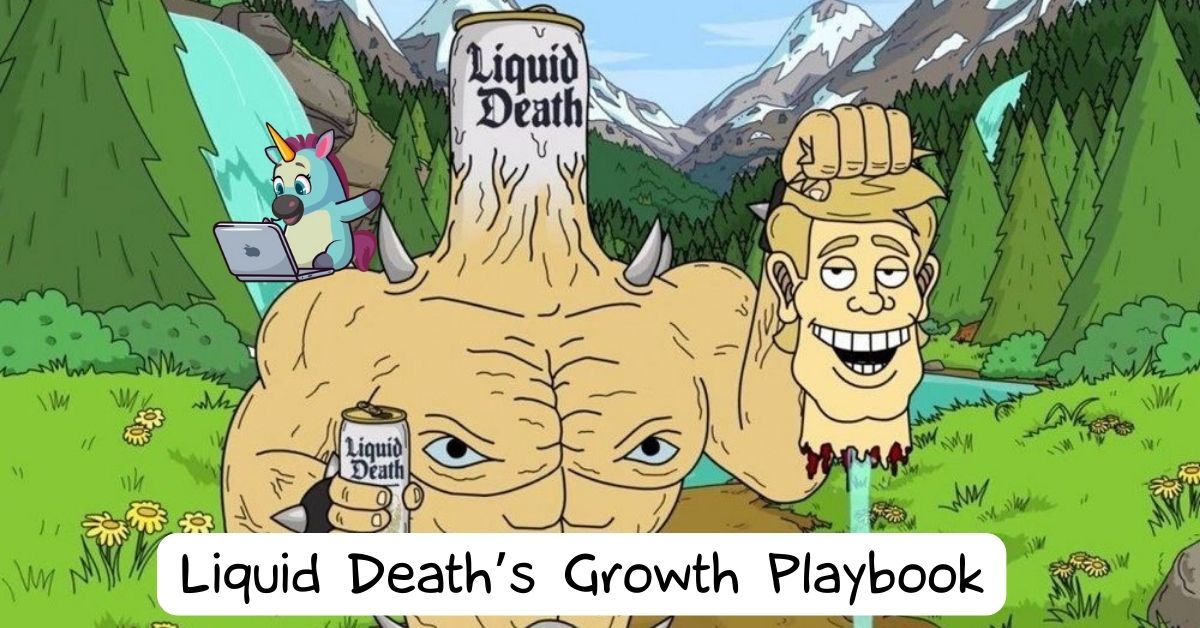
Leave a Reply